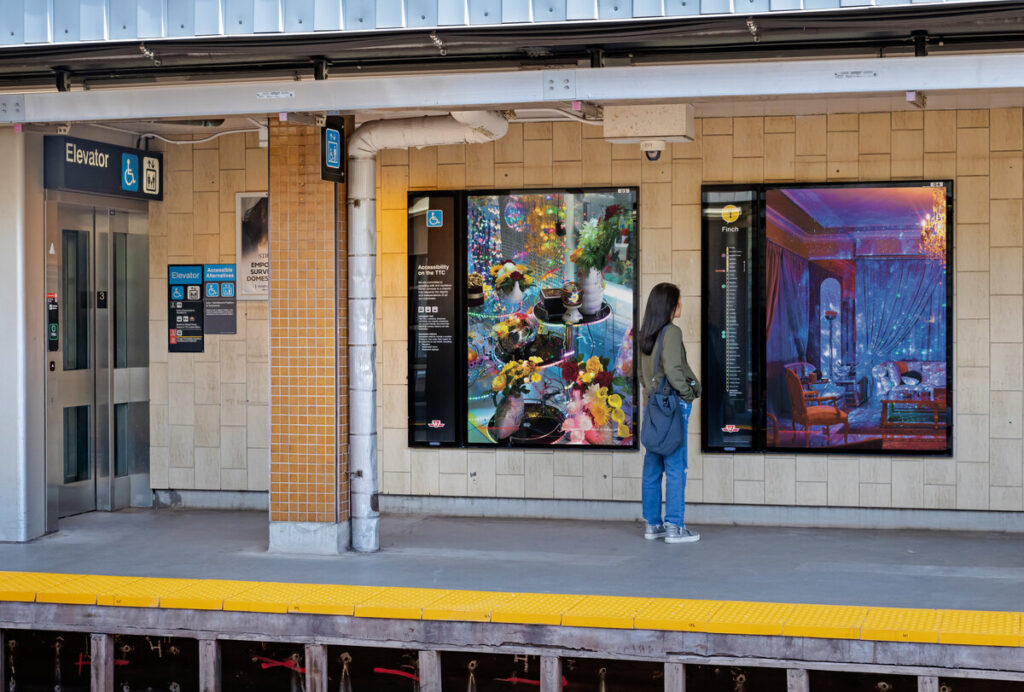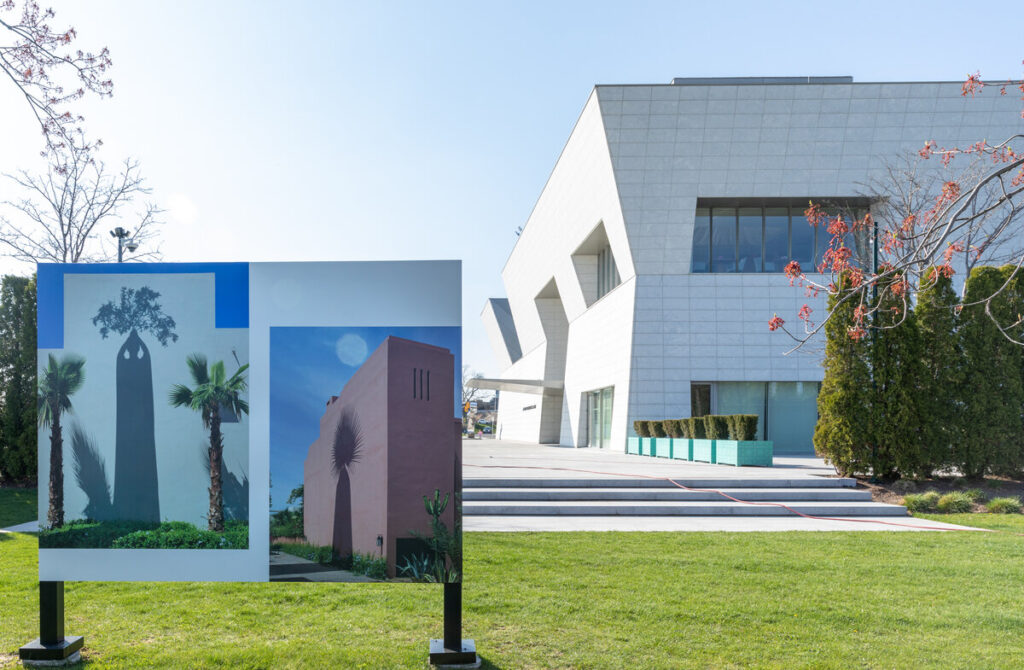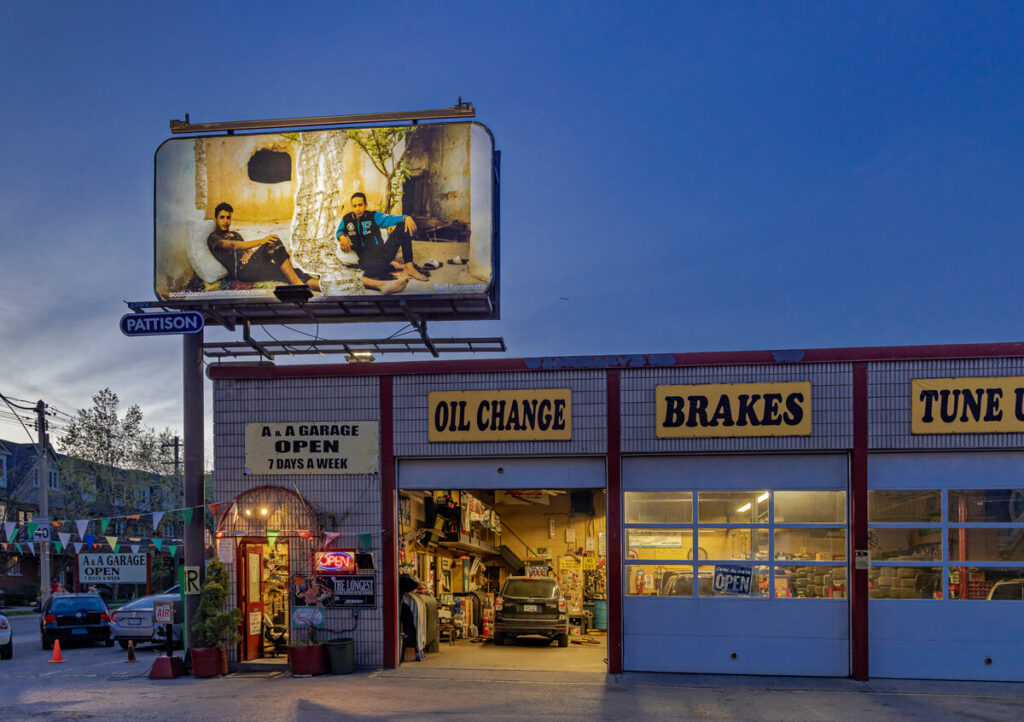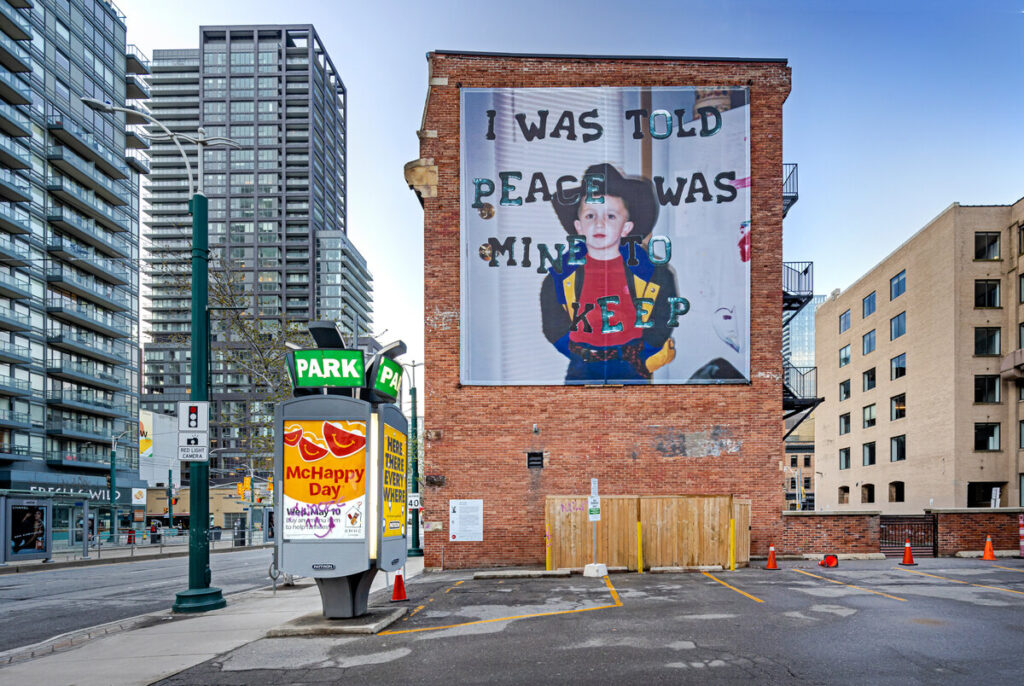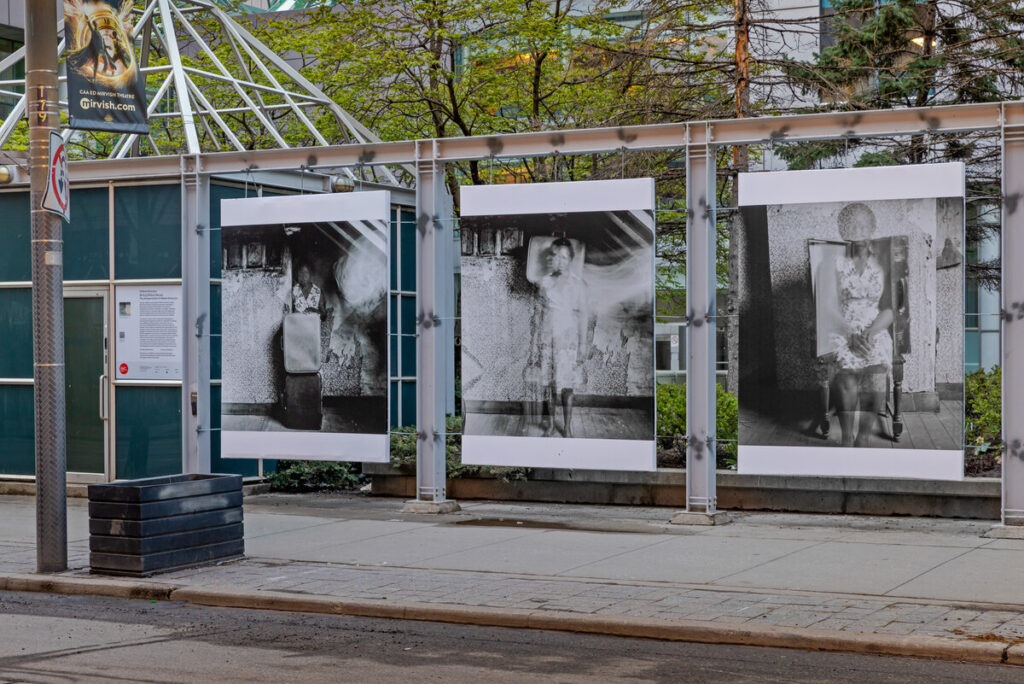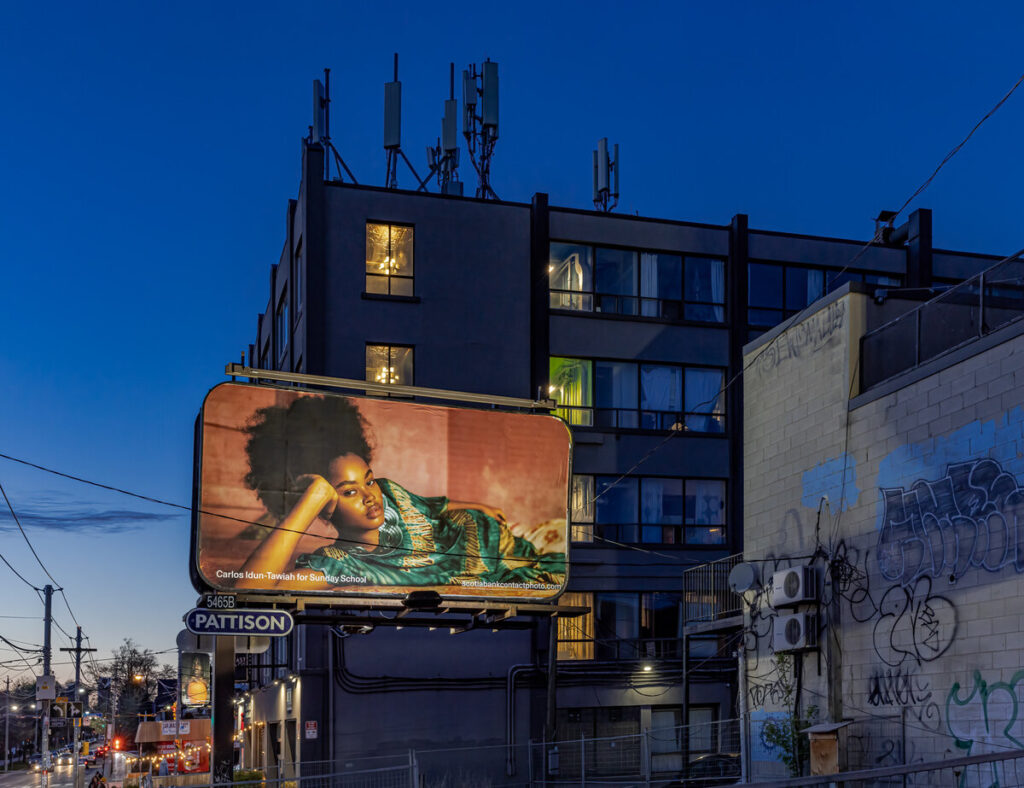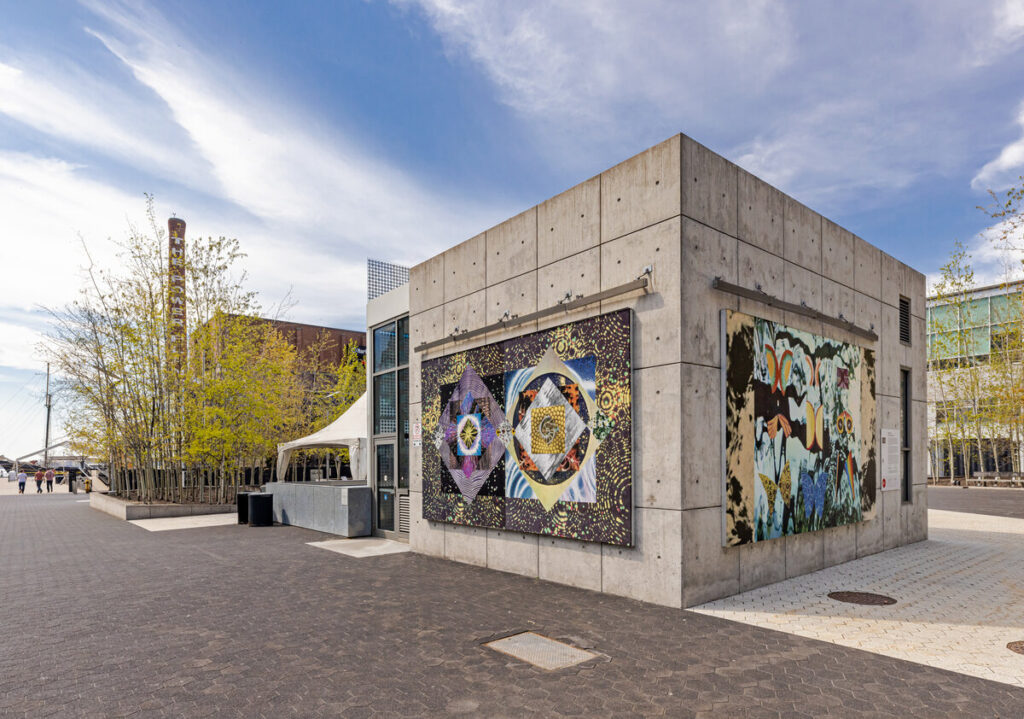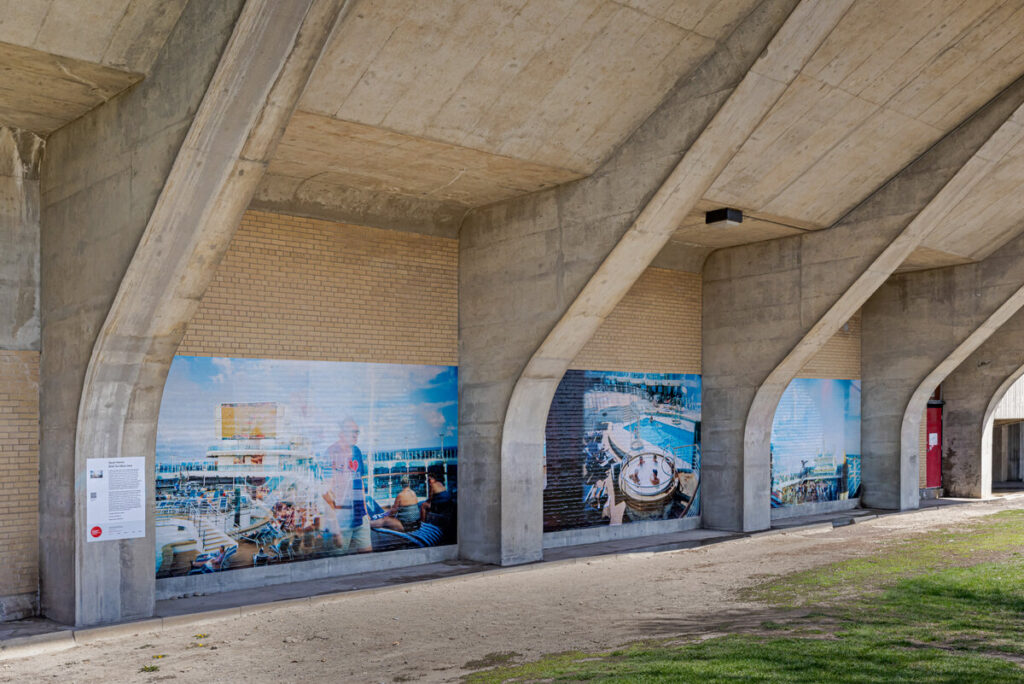Interview with Heather Canlas Rigg (HCR), Artistic Director of Scotiabank Contact Photography Festival (CONTACT) about Public Art by Phil Anderson (PA)
PA: This year the Scotiabank CONTACT Photography Festival has 21 Core Outdoor Installations. What has been the public reaction to these outdoor works in the past? Is this a growing trend?
HCR: This year marks 21 years of CONTACT’s public art program, and the response to our public installation program has always been really positive. It presents a unique opportunity to take over advertising space, such as billboards, and building facades, and to share artwork with the public. It’s a completely different conversation when working with artists to place their work within a public context, as it requires many nuanced considerations, and generates a particular kind of conversation with a public audience. This is in contrast to exhibiting art in white-cube-style gallery spaces, which garner specific audiences and therefore a certain type of experience.
Farah Al Qasimi, Night Swimming, 2023, installation view, Davisville Subway Station, Toronto. Courtesy of the artist and Scotiabank CONTACT Photography Festival. Photo: Toni Hafkenscheid
I wouldn’t say it’s a trend, as artists have been using public spaces for a long time – there’s an argument to be made that artists have been creating public art for longer than gallery spaces have existed. Photography has changed the way images and art can be publicly viewed and contextualized, and artists taking over spaces traditionally consigned to advertisements and commercial concerns disrupts what viewers expect to see in that space.
PA: How do you find artists for this program? Do you seek them or do they mostly apply?
HCR: CONTACT and its guest curators seek out local and international artists whose practices could develop in new ways by being adapted to a public art context. It is important to CONTACT to continue to provide both artists and curators with the opportunity to work in a public setting, as it gives them the chance to think about how their work can be understood within new environments and contexts, and how it may be received by broader audiences than they are used to.
Maïmouna Guerresi, Sebaätou Rijal & Villes Nouvelles and Ancient Shadows, installation view of the series Villes Nouvelles & Ancient Shadows, Aga Khan Park, Toronto, 2023. Courtesy of the artist and the Aga Khan Museum. Photo: © Salina Kassam
PA: Are there difficulties with the logistics of these kinds of works?
HCR: Thinking through how an artwork will be contextualized in a specific public setting is the first and most important step. I suppose this is more of a conceptual step than a logistical one, but in many ways, it is the most important one. As mentioned, the audience for these installations is the general public, not the art-seeking audience you get in a gallery context, because those viewers are choosing to go to see art. We have to consider how an artwork, which in our case is most often an image or a set of images, will be received by absolutely everyone! If folks respond negatively to a public art project, we have to think through what our response is, and take in this feedback to share with the artists, the curator, and among ourselves, to reference in the future and make sure that we take the most sensitive approach that we can, going forward.
Seif Kousmate, Waha (Oasis), 2023, installation view, billboards at King St W and at Strachan Ave, Toronto. Courtesy of the artists and Scotiabank CONTACT Photography Festival. Photo: Toni Hafkenscheid
Another important logistical step is construction. Billboard projects are quite easy, in a logistical sense, because the infrastructure for installing two-dimensional images is already in place. When sculpture is being fabricated as part of an installation, or a structure is being built, we need to consult with engineers and installers to make sure everything will stay in place and that our projects meet public building codes. This is inevitably a long and complex process involving many parties.
PA: Has this kind of public display added to the awareness of the Festival? How do you measure this?
HCR: Our outdoor installations definitely increase our audience numbers and public awareness of the festival. The number of folks who see our billboard projects, for example, is unprecedented compared to the number of visitors who will go to a gallery. Most billboards have thousands of people drive, walk, or other, past them every day, so when our projects are on view for at least four weeks, the number of people we’re able to reach adds up very quickly, and exposes vast new audiences to artists’ work they may otherwise never have known of or have seen before.
The impact is measured through various sources. Pattison Outdoor Advertising keeps track of how many people walk, drive, cycle, etc., past their billboards, so we receive data regarding the number of “viewer impressions” from them. We also have projects installed, for instance, along King Street West in the Entertainment District, and on the side of a building at King Street West and Spadina Avenue. The City of Toronto and specific property managers keep track of the various modes of public engagement and number of impressions at these and other installation sites across the city.
Jake Kimble, Grow Up #1, 2022, installation view, 460 King St W, Toronto, 2023. Courtesy of the artist and Scotiabank CONTACT Photography Festival. Photo: Toni Hafkenscheid
PA: How long has the Festival had the support of Pattison Outdoor Advertising? This must play a strong role in this part of the program.
HCR: CONTACT has been working with Pattison for over 15 years, and they have been very supportive of the festival’s public art program throughout our partnership.
PA: What draws curators to this part of the Festivals Program?
HCR: Over the last few years we have been developing a more robust guest curator program for our public art projects. Through this initiative we invite selected local and international curators to work with us for three consecutive festivals. This brings new voices, both curatorial and artistic, to CONTACT. It provides curators with a unique and extensive experience, curating projects specifically for a public context. For example, London (UK)-based curator Mark Sealy, also the founder of Autograph ABP (Association of Black Photographers), has curated our 13-panel installation at Metro Hall (along King Street West) for the 2022 and 2023 Festivals.
Hélène Amouzou, Writing Without Words: The Autoportraits of Hélène Amouzou, installation view, Metro Hall along King St W, Toronto, 2023. Courtesy of the artist and Scotiabank CONTACT Photography Festival. Photo: Toni Hafkenscheid
This year he worked with Togolese-Belgian artist Hélène Amouzou, Toronto-based independent curator Emilie Croning, and Curatorial Assistant, Arts of Global Africa & the Diaspora at the Art Gallery of Ontario, worked with Sunday School, a creative agency that brings together the work of artists from Africa and its diaspora in a billboard project featuring six images at Lansdowne Avenue and Dundas Street West.
Sunday School, Feels Like HOME, 2023, installation view, billboards at Lansdowne Ave at Dundas St W and at College St, Toronto. Courtesy of the artists and Scotiabank CONTACT Photography Festival. Photo: Toni Hafkenscheid
PA: Is there a particular installation or work that is especially unique this year?
HCR: Since they are each site-specific in some manner, each of our outdoor projects feel unique in their own ways. This year artist Maggie Groat’s work is on view in both indoor and outdoor settings. Entitled DOUBLE PENDULUM, her collage- and found-object-installation-based work is on view at CONTACT Gallery, and speaks to the artist’s interest in doubling, mirroring, collecting, and salvaging. Her two outdoor installations extend to multiple shorelinessouth of the gallery at Harbourfront Centre, three of Groat’s images are installed as wheat-pasted paper prints, eschewing the vinyl traditionally used for installations at this site. The images selected for this site speak to the human-altered waterfront of Lake Ontario. Northward, at the intersection of Dovercourt Road and Dupont Street, are two vertical billboards, which invoke a dialogue going back in time to the ancient glacial shorelines of the area.
Maggie Groat, DOUBLE PENDULUM, 2023, installation view, wheat-pasted images at Harbourfront Centre parking pavilion, Toronto. Courtesy of the artist and Scotiabank CONTACT Photography Festival. Photo: Toni Hafkenscheid
We also have a new outdoor installation in the east end of the city this year – the Donald D. Summerville Olympic Pools’ south façade features three images from Sarah Palmer’s series Wish You Were Here.
Sarah Palmer, Wish You Were Here, 2018, installation view, Donald D. Summerville Olympic Pools, south façade, Toronto, 2023. Courtesy of the artist and Scotiabank CONTACT Photography Festival. Photo: Toni Hafkenscheid
PA: Are you already thinking about next year’s Outdoor Program? Will it be even bigger?
HCR: We can’t say for sure whether it will be bigger, as it is already immense, but we are definitely already thinking about it. Stay tuned for updates in the fall of 2023!
Images are courtesy of the Scotiabank CONTACT Photography Festival

